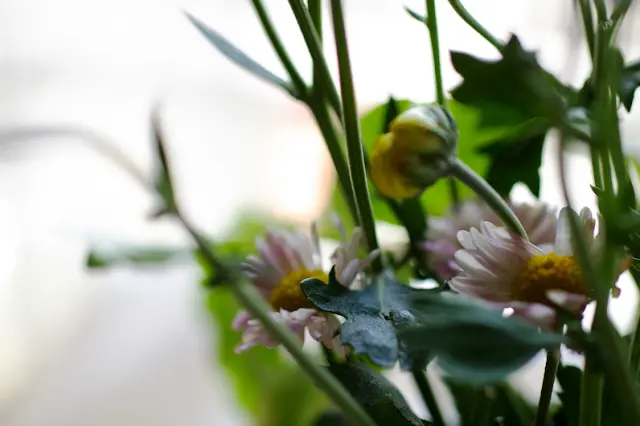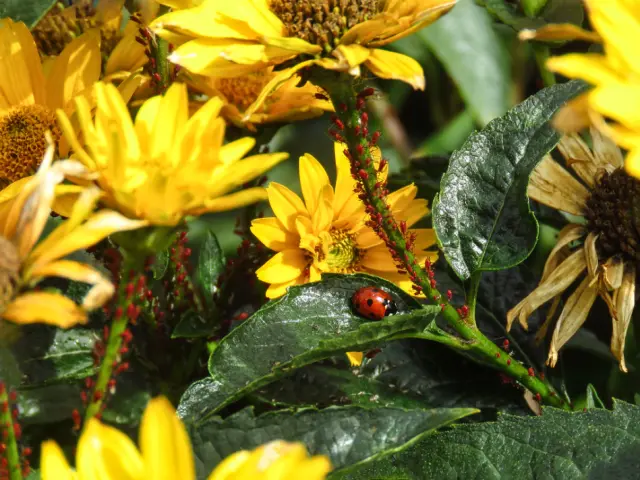As autumn’s vibrant tapestry gradually gives way to winter’s chill, gardeners often find themselves contemplating the fate of their beloved chrysanthemums, affectionately known as mums. These hardy perennials are cherished for their stunning array of colors and ability to bring a burst of life to fall landscapes. To ensure the longevity and vitality of your mums, mastering the art of overwintering is essential. In this comprehensive guide, we’ll delve into the intricacies of how to successfully overwinter mums, providing insights into proper preparation, care, and protection to guarantee vibrant blooms in the seasons to come.
Overwintering Mums to Ensuring Vibrant Blooms Year After Year
Before delving into the specifics of overwintering, it’s crucial to have a basic understanding of chrysanthemums. Mums are perennial plants that, with the right care, can return year after year. They belong to the Asteraceae family and are prized for their diverse bloom shapes, ranging from daisy-like to pompon and decorative varieties. By harnessing their natural resilience and following a few key steps, you can enjoy the beauty of mums for many autumns to come.

- Preparation in Fall:
The foundation for successful overwintering begins in the fall, as the growing season draws to a close. Follow these steps to prepare your mums for the impending winter months:
a. Pruning: Trim back your mums to about 6 inches above the ground after the first killing frost. This helps the plant redirect its energy to the roots.
b. Watering: Ensure the plants receive ample water before the ground freezes. Hydrated roots are better equipped to withstand winter conditions.
c. Fertilization: Apply a balanced, slow-release fertilizer to fortify the plants for the dormant period. This promotes healthier root development during winter.
d. Mulching: Surround the base of each mum with a layer of mulch to insulate the soil and protect the roots from extreme temperature fluctuations.
- Choosing the Right Location:
Identifying an appropriate overwintering location is paramount to the survival of your mums. Consider the following factors:
a. Sunlight: Choose a location that receives ample sunlight. Mums typically require at least six hours of sunlight daily.
b. Wind Protection: Shield the plants from harsh winter winds. A location with a windbreak, such as a fence or building, helps prevent desiccation.
c. Well-Drained Soil: Ensure the soil has good drainage to prevent waterlogging, which can lead to root rot. Elevated beds or well-draining soil amendments can be beneficial.

- Container-Grown Mums:
If you prefer growing mums in containers, adapt your overwintering strategy accordingly:
a. Move Indoors: Consider relocating potted mums to a garage or shed to shield them from extreme temperatures and frost.
b. Reduce Watering: Since container-grown mums are more susceptible to freezing, reduce watering during winter, allowing the soil to dry slightly between waterings.
- Protection Against Frost:
Mums are hardy, but extreme cold can still pose a threat. Implement these protective measures:
a. Covering: When a hard frost is forecasted, cover your mums with a layer of burlap or frost cloth to shield them from freezing temperatures.
b. Mulch Depth: Ensure the mulch around the plants is thick enough (about 4-6 inches) to provide ample insulation.

- Monitoring During Winter:
While mums are in their dormant phase, it’s essential to keep a watchful eye on their well-being:
a. Inspect for Pests: Periodically check for signs of pests, as some insects may take refuge in the protective coverings. Treat any infestations promptly.
b. Watering in Moderation: Water sparingly during winter, ensuring the soil remains slightly moist but not waterlogged.
c. Adjust Coverings: Be prepared to adjust coverings based on weather conditions. If temperatures rise, provide ventilation to prevent excessive humidity.
- Spring Revival:
As winter bids adieu and the first signs of spring emerge, it’s time to revive your mums:
a. Uncover Gradually: Slowly remove winter coverings as temperatures rise, allowing the plants to acclimate to the changing conditions.
b. Resume Normal Care: Gradually resume regular watering and fertilization as the mums come out of dormancy.
c. Prune and Shape: Trim any dead or damaged growth, shaping the plants to encourage healthy, bushy growth.
MORE POSTS: How to keep gerbera daisies alive in a vase
Conclusion:
Successfully overwintering mums is a rewarding endeavor that ensures your garden is graced with its colorful presence year after year. By diligently preparing your mums in the fall, choosing the right overwintering location, protecting against frost, and monitoring their well-being throughout winter, you can enjoy a perennial display of vibrant blooms. Embrace the cyclical nature of gardening, and with each passing season, witness the resilience and beauty of your cherished chrysanthemums.
Resources:
https://www.almanac.com/are-mums-perennials-which-mums-come-back-year-after-year
https://www.weekand.com/home-garden/article/overwinter-fall-mums-indoors-18047435.php
